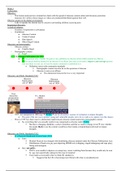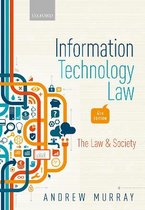Week 5
Cybercrime:
Objective:
- This lecture analyses how criminal law deals with the spread of obscene content online and discusses protection
measures for victims whose images or videos are produced/distributed against their will.
Obscene content in the digital environment:
- Calls to regulate the internet due to concerns surrounding children accessing porn
Regulating Obscenity:
A clash of cultures:
- Freedom of expression in cyberspace
- Limitations:
o Obscene Content
o Violent Content
o Hate Speech
o Other Illegal Content
Obscenity and pornography:
- Obscene content
o Usually illegal
- Pornographic content
o Legal
- UK Obscene Publications Act 1959
o s.2 Any person who, whether for gain or not, publishes an obscene article shall [commit an offence]
o S.1 An article shall be deemed to be obscene if its effects [are such as] to tend to deprave and corrupt persons
who are likely to read, see or hear the matter contained or embodied in it
Definition varies with community standards
Obscenity and public standards (UK)
Pornographic content can also be on the spectrum of obscene
Obscene is seen as an offence
o The distinction between the two is very important
Obscenity and Public Standards [UK]
Obscene Obscene
Publications Publications
Act of 1857 Act of 1959
First
obscenity R v. Hicklin
prosecution (1868)
in UK (1727) Test for obscenity
“whether the tendency of the matter
charged as obscenity is to deprave and
corrupt those whose minds are open to
such immoral influences, and into whose
hands a publication of this sort may fall."
- 1857: Act interpreted in 1868 case Hicklin test for obscenity= essence of corruption is impure thoughts
o The goal of the test was to protect young and vulnerable people, not to be so wide as to capture even the classics
- Prior to 1959 Act, there wasn’t a distinction made between obscene content and erotic pornographic content
o So, everything that was sexually explicit was categorised as obscene under Hicklin
But due to changing standards, a select committee said that we need to change to test now whether
the people likely to see the content would have their minds corrupted/depraved/result in impure
thoughts
Obscenity and Public Standards [UK]:
- R. v Peacock (Southwark Crown Court, 2012)
o Facts:
Michael Peacock was charged with distributing obscene material under the Obscene Publications Acts.
Distribution of hard-core gay porn depicting BDSM acts (whipping, staged kidnapping and rape play),
fisting and urolagnia.
o Jury: not guilty:
DVD’s were unable to deprave or corrupt any viewer watching them because they would only be seen
by ‘gay men specifically asking for this type of material’.
Case made us reconsider what we think the standard is
Suggests that the UK is becoming more liberal with what is considered porn
, Obscenity and public standards in
cyberspace
Obscenity and Public Standards in Cyberspace
Difficult to establish
Different
a single community
backgrounds of Spectrum of Works offline
different obscenity but not online
standard
countries
Balkanisation of No monolithic
The daily me communities community
standard
- Difficult to establish a community standard on cyberspace due to lawmakers across the globe
o They cannot agree what is considered sexually explicit spectrum from extremely liberal and extremely
conservative. Hard on cyberspace as unlike the real world, we cannot stop it at the boarder
1- Cyberspace is made up of micro-communities
1 o Who are normally considered at the fringes of society [‘the daily me’] customised newspaper. The new idea
around cyberspace so difficulty in setting up common community standards.
- Balkanisation division/fragmentation. Online we have different communities that can become hostile to each other
Attempts to regulate cyberporn:
- The US has made a big impact on regulating cyberporn
- In terms of indecency, obscenity and content the de facto internet standard is the US standard. Due to large amount of US
content US is the big supplier of porn. They have a community standard domestically, that is spread globally.
- This allows for overwhelming protection for freedom of expression through the First Amendment.
- Concerns of children accessing porn led to a campaign by Clinton Administration to regulate.
Obscenity and public standards [US]:
- Standard test of obscenity is found in:
o Miller v California 413 U.S. 15 (1973)
Guidelines [3-part test for obscenity]:
Whether ‘the average person, applying contemporary community standards’ would find that
the work, taken as a whole, appeals to the prurient interest
Whether the work depicts or describes, in a patently offensive way, sexual conduct
specifically defined by the applicable state law, and
Whether the work, taken as a whole, lacks serious literary, artistic, political, or scientific
value.
- BUT:
o Miller v. California specifically empowers local community standards.
Is this effective in cyberspace?
Move to national controls [US has moved to national rather than local due to the concerns
surrounding cyberspace undermining the local community standards]:
o Communications Decency Act 1996
o Child Online Protection Act 1998
Controlling Online Indecency [US]
- The Communications Decency Act 1996 (CDA) this Act treated the internet as a major broadcast medium
o Prohibited posting “indecent or patently offensive” materials in a public forum on the Internet
However, they struggled to define the type of content in particular that they were seeking to control due
to a lack of national standard
o CDA was not about child pornography, obscenity, or using the Internet to stalk children (already illegal)
- American Civil Liberties Union (ACLU) launched a Free Speech campaign in response to the CDA:
o Wording of CDA is too wide
Would also catch classic fiction + other materials that would be seen as offensive
o Protection of children v freedom of expression of adults
- Reno v ACLU (1997) 117 S. Ct. 2329
o Facts:
1 February 1996: CDA was passed & immediately challenged by several civil liberties groups.
12 June 1996: struck out by a Philadelphia Court following a challenge by the Citizens Internet
Empowerment Coalition.
26 June 1997: struck out by the Supreme Court following a challenge from the American Civil
Liberties Union (Reno v ACLU).
o Judgement:
The CDA lacks the precision that the First Amendment requires when a statute regulates the content
of speech. Although the Government has an interest in protecting children from potentially harmful
materials, the CDA pursues that interest by suppressing a large amount of speech that adults have a
, constitutional ight to send and receive. The CDA’s burden on adult speech is unacceptable if less
restrictive alternatives would be at least as effective in achieving the Act's legitimate purposes.
o Case also had a massive impact on the UK due to importing content
o Any content stored on a US server gains the First Amendment protection so
depends on the server [if UK, then UK law and US is more permissive than UK]
So if we want proper regulation, international cooperation is required [esp
with the US agencies]
- The Child Online Protection Act 1998 (COPA) [US]
o COPA required all commercial distributors of material harmful to minors to protect their sites from access by
minors.
Harmful to minors = material that by ‘contemporary community standards’ was judged to appeal to
the prurient interest and that showed sexual acts or nudity (including female breasts).
= much lower standard than obscenity!
o Would cover both hardcore and softcore pornography
However, limited impact:
Only commercial speech & only affects US providers
- Ashcroft v ACLU 542 US 656 (2004)
o Facts: Legality of COPA was challenged before even coming into effect
o Supreme Court:
The purpose of the test is to ensure that speech is restricted no further than is necessary to accomplish
Congress’ goal. The District Court’s conclusion that respondents were likely to prevail was not an
abuse of discretion, because, on the record, the Government has not met its burden. Most importantly,
respondents propose that blocking and filtering software is a less restrictive alternative, and the
Government had not shown it would be likely to disprove that contention at trial.
o Disproportionate initiative govt didn’t show that they considered filters which
would remove the chilling effect of a COPA type legislation
Thus, COPA was also struck down
Interim conclusion:
- Indecent content is difficult to regulate in the US (Reno & Ashcroft).
o Majority of web sites in general, and of pornographic websites in particular, are based in the US there is little
anyone else can do about the law.
- Increased reliance on filtering and monitoring, and local prosecution for the protection of minors.
- Obscene material is of course illegal, both in the US and UK and may be prosecuted.
o But different standards of what is considered to be obscene
The Regulation of Online Pornographic Materials
The internet is for… porn?
- Broad audience/market
- Cheap production costs due to digitisation
- Difficult to enforce community values and norms
Controlling Online Indecency [UK]:
- Relevant legislation (1)
o Obscene Publications Act 1959 as seen previously this defines and criminalises publication of obscene material
o Protection of Children Act 1978 concerns the taking and distributing of indecent photographs of children.
o Telecommunications Act 1984 makes illegal the transmission of offensive communications over a public
telecommunications network.
o Malicious Communications Act 1988 makes it an offence to send an e-mail that conveys indecent material if the
purpose was to cause a recipient to suffer distress or anxiety.
o Criminal Justice Acts of 1988 and 1994 make it an offence to possess, store, electronically alter or distribute
child pornography.
o Communications Act 2003 makes it an offence to send by means of the Internet a message or other matter that is
grossly offensive or of an indecent, obscene or menacing character.
- Relevant legislation (2)
o Criminal Justice and Immigration Act 2008 make it an offence to possess, store, or distribute ‘extreme’
pornography.
o Coroners and Justice Act 2009 make it an offence to possess, store, or distribute an ‘image’ (i.e. not a
photograph or pseudo photograph) of a child in a pornographic image (i.e. Porn cartoons etc).
o AVMS Regulations 2014 require that online paid-for video-on-demand (VoD) porn is regulated by the same
guidelines as DVD pornography set out by the BBFC. This means that all online paid-for video-on-demand
(VoD) porn must adhere to R18 video standards.
o Criminal Justice and Courts Act 2015 criminalises the possession of ‘rape porn’ by adding it to the list of
banned ‘extreme’ pornography. Also bans the distribution of ‘revenge porn’.
o Investigatory Powers Act 2016 governs the use of intrusive investigative techniques, including interception.
Online indecency in the UK Courts:
- R. v Fellows [1996] EWCA Crim 825





